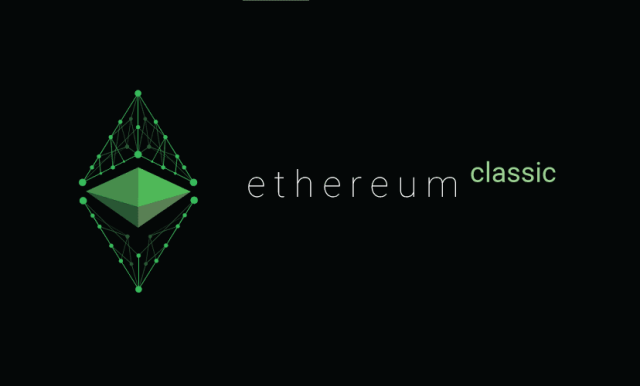
The investing information provided on this page is for educational purposes only. NerdWallet, Inc. does not offer advisory or brokerage services, nor does it recommend or advise investors to buy or sell particular stocks, securities or other investments. We believe everyone should be able to make financial decisions with confidence. Plaintext is what you type into your phone when you send a text or even the words that you’re reading right now. Plaintext is found everywhere and can contain sensitive information — like the password to your crypto wallet. Cryptography can protect the confidentiality and integrity of data both in transit and at rest.
How does cryptography protect data privacy?
Hash Function helps in linking the block and maintaining the integrity of the data inside the block, and any change in the data of the block leads to breaking the blockchain. Asymmetric cryptography is a method that uses a pair of keys—one public and one private—for encryption and decryption. The public key encrypts data while the private key decrypts it, preventing unauthorized access, and ensuring confidentiality and integrity in digital transactions.
Centralized blockchain

In other words, the public key turns plaintext into ciphertext, but a user’s private key turns the ciphertext back into plaintext. Blockchain has the ability to change many things about the banking and financial systems, digital art, smart contracts, and so on. From a commercial https://www.tokenexus.com/ standpoint, we can think about blockchain technology as a new breed of business process improvement software. Blockchain and other collaborative technologies promise to significantly reduce the “cost of trust” by enhancing the commercial activities that take place between firms.
How Is Encryption Used in Crypto?

Hashing, public-private key pairs, and the digital signatures together constitute the foundation for the blockchain. These cryptographic features make it possible for blocks to get securely linked by other blocks, and also ensure the reliability and immutability of the data stored on the blockchain. One of the major parts of asymmetric-key cryptography is digital signatures. Digital signatures provide integrity to the process; they are easily verifiable and cannot be corrupted. They also hold the quality of non-repudiation, making them similar to the signatures in the real-world. The digital signatures ensure that the blockchain is valid and the data is verified and correct.
Smart contracts govern transactions, assigning and reassigning ownership and delivering royalties to artists as pieces move from wallet to wallet. As blockchain networks grow in popularity and usage, they face bottlenecks in processing transactions quickly and cost-effectively. This limitation hampers the widespread adoption of blockchain for mainstream applications, as networks struggle to handle high throughput volumes, leading to congestion and increased transaction fees.
This village’s financial system may not be the easiest to use, but it gives everyone in the village a way to keep track of their transactions. It is a public ledger that keeps permanent records, which can’t be altered. There is no central bank or government that is responsible for the transactions. By now, you’ve probably seen hundreds of articles about blockchain technology, each attempting to describe what it is, and how it’s the next big revolution to hit the tech world. At the end of the article, many people are still perplexed because the authors brush over a lot of complicated concepts without explaining them.
- A blockchain is a digital ledger of transactions maintained by a network of computers in a way that makes it difficult to hack or alter.
- Digital signatures provide an additional layer of security in blockchain cryptography.
- Fortunately, this doesn’t mean that Alice loses the extra two bitcoins.
- You will gain insight into concepts such as hash functions in blockchain, core components and advantages of blockchain, and assumptions and challenges in blockchain security.
- The hash function aids in linking blocks and the integrity of data inside blocks; any changes to the block contents result in a break in the blockchain.
Breaking Down Cryptography
- (2020) The Bahamas becomes the world’s first country to launch its central bank digital currency.
- This means that, without consensus of a network, data stored on a blockchain cannot be deleted or modified.
- One of the major parts of asymmetric-key cryptography is digital signatures.
- The method used to secure data from unauthorised access is called cryptography.
- These insights help compile data, determine faster routes, remove unnecessary middlemen and even defend against cyberattack interference.
- Digital signatures use private keys to encrypt transactions, adding an extra level of security to the blockchain.
This isn’t to say that blockchain technology won’t have any future uses, just that it is yet to be as fruitful as many may have hoped. At this stage, it’s hard to know whether or not some of these projects will be successful in the coming years. While cryptocurrencies have seen their values spike and plummet, they still see comparatively Blockchain Cryptography few transactions for everyday use. The number of businesses which accept them is limited, while the transaction costs for bitcoin become too high when the currency is frequently used. On top of this, the bitcoin network can’t handle anywhere near the volume of transactions as an alternative like the traditional Visa system.

Role of Cryptography in Blockchain
This is simply because bitcoin was the first functional blockchain, and most others are based heavily on its design. The miners then collect each of these transactions and form them into a block. When a miner succeeds, it sends the block to all of the nodes on the network. Each new timestamp is a hash that combines the current block’s transaction data and the timestamp of the previous block. This creates a chain of timestamps, with future ones solidifying those timestamps that came before them.